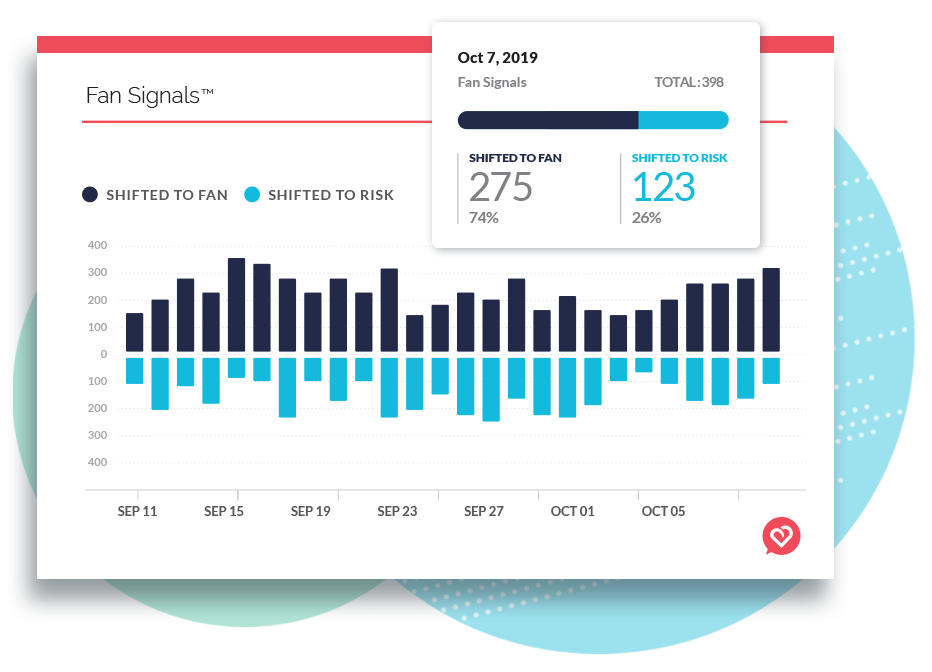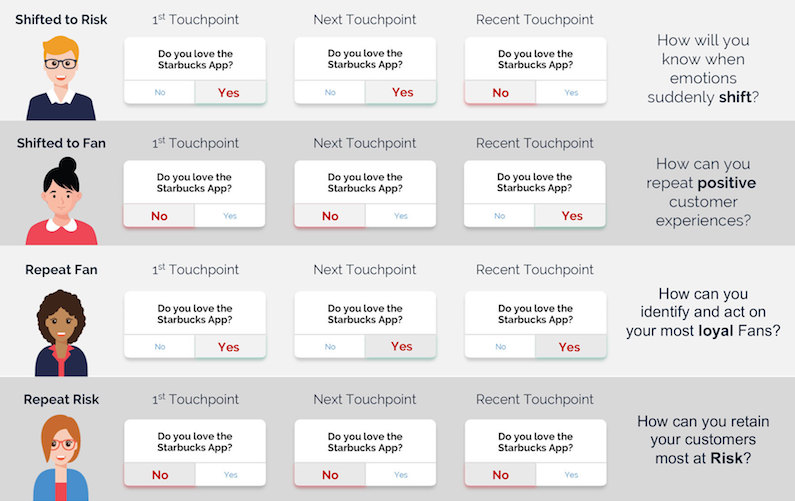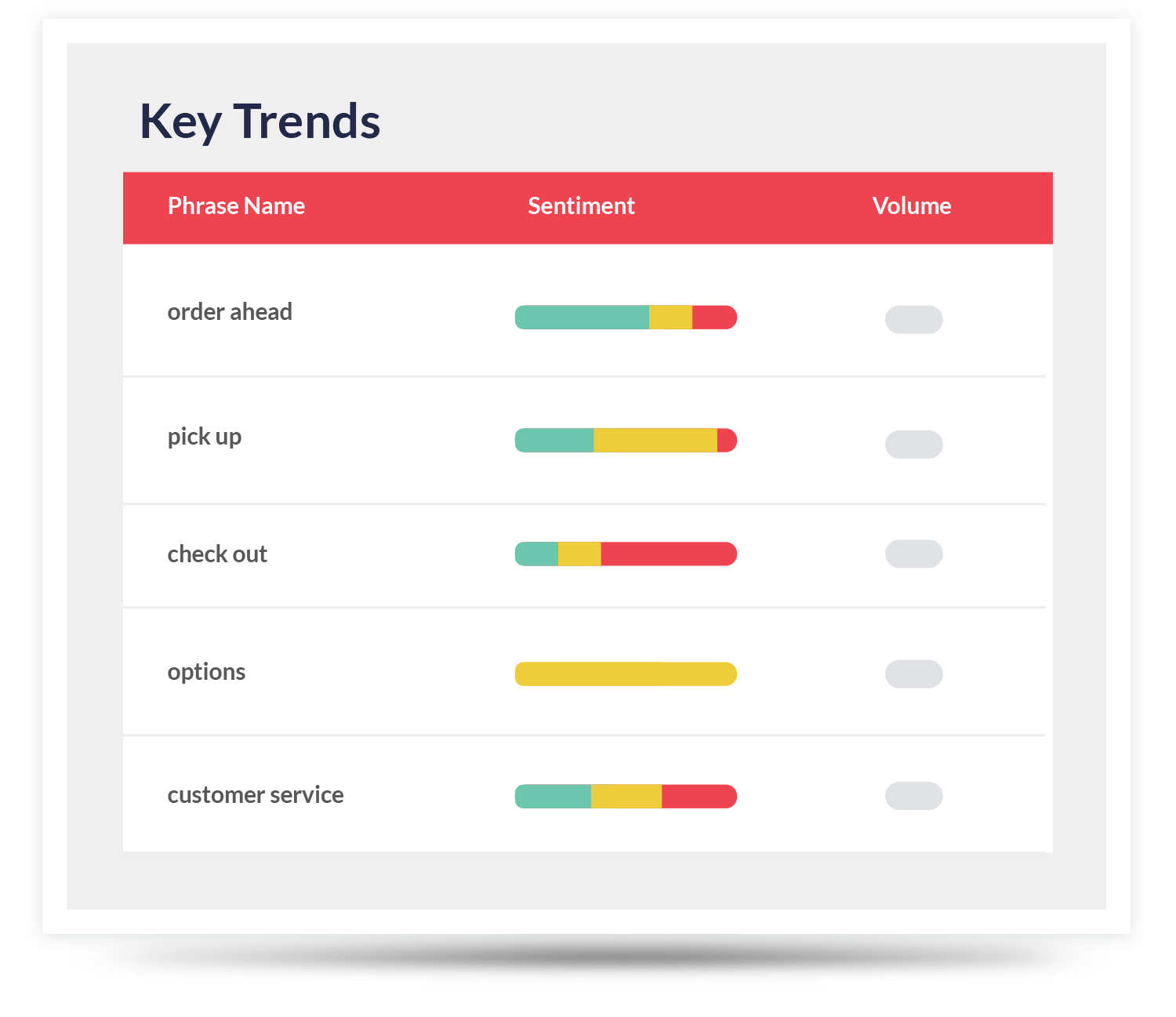As consumers, emotions drive us to make many of our decisions. When we experience emotion, our brains release chemicals that make us feel positive or negative about what’s happening. Customers’ actions—whether completing a purchase, leaving a review, or mentioning your company—always reflect an emotional state.
But it can be hard to measure a feeling. This post explains how to measure customer emotion that drives mobile action, along with step-by-step guidance on where to start.
What is Customer Emotion Data?
Most large brands use CSAT to gauge customer happiness and adjust their product roadmaps. CSAT is a lagging indicator and won’t help much with current pressures in customer connection. It also fails to respond in real time to shifts in emotion. According to Gartner, real-time emotional shifts are the best metric for improving customer experience.
A new standard for measuring emotion and sentiment involves analyzing customer voice and feedback. Alchemer Mobile (formerly Apptentive) refers to this as “customer emotion data.” We capture emotion data through Fan Signals™, which allows your brand to measure expressed sentiment across time and mobile touchpoints, helping you identify when sentiment has shifted and why—down to individual customer IDs.
4 Ways to Measure Customer Emotion
1. Determine who, where, and how often
Targeting based on customer action is essential to success in measuring customer emotion. If you don’t target and personalize your mobile engagement points based on customer behavior, measuring them will be pointless.
To understand the importance of these points better, think about your experience while shopping at your favorite retail store. In-store sales associates won’t interrupt you during a conversation to offer assistance. They also won’t ask if you need a fitting room until you’ve selected some items of interest. Similarly, targeting lets you communicate with specific customers only after they have engaged with your app. This approach ensures that you don’t disrupt their in-app experience.
Let’s look at each of the three attributes individually.
- Determining who: You must first decide who to target. For example, if you’re setting up a survey, always ask yourself, “Who should be able to see this survey?”. We recommend targeting based on several attributes. Consider custom person and device data, actions people have taken within the app, and which interactions they have or have not seen in the past.
- Determining where: First, determine who should be eligible for a particular interaction. Then, choose where customers will see this interaction. Ask yourself, “Where should I display this interaction?” Ensure you don’t interrupt customers while they’re completing an action.
- Determining how often: The last piece of targeting you’ll need to consider is how often to display the interaction. There are different options for this depending on the interaction type, like a survey or an informative note.
2. Focus on expressed sentiment
To capture customer emotion data, we look at expressed sentiment based on mobile actions and feedback. In measuring expressed sentiment, we segment customers into four categories:
- Fans Shifted to Risks: Customers whose expressed emotion has shifted from positive to negative, or from Fan to Risk.
- Risks Shifted to Fans: Customers whose expressed emotion has shifted from negative to positive, or from Risk to Fan.
- New or Repeat Fans: Customers who have expressed positive emotion for the first time by answering “Yes,” or who have expressed positive emotion at least twice in a row.
- New or Repeat Risks: Customers who have expressed negative emotion for the first time by answering “No,” or who have expressed negative emotion at least twice in a row.
Visually, shifts in customer sentiment look like this:
3. Quantify the “why” behind shifted sentiment
There are various reasons why expressed sentiment shifts. Shifted Fans are typically validation that you’ve improved your customer experience or made a positive change to your in-app experience. Shifted Risks indicate the opposite. They usually show that you’ve made a negative change to your offerings or customer experience. People are unhappy with these changes.
Ultimately, brands find expressed emotion useful when they connect shifted sentiment to changes in their in-app experience or product offerings. For example, if many of your loyalty program members suddenly shift from Fan to Risk, trace back to identify what changed in your in-app experience. Understanding these changes will help you correct the shift and improve customer satisfaction. If a repeat Fan suddenly shifts to Risk, that’s the best opportunity your brand has to get ahead of retention drop-off. If the customer is a repeat Risk, you have less of a chance in being successful retaining them.
A repeat Risk customer presents a lower chance of successful retention. For example, if the customer is consistently a Fan who has not shifted, your brand’s job is to help turn them into advocates. The converse is also true: if a customer is consistently unhappy, your brand must take dramatic action to retain them. Otherwise, you risk losing them to a competitor.
Note: Our 2020 Mobile App Engagement Benchmark Report digs into industry standards for shifts in customer sentiment. Last year, the average number of New or Repeat Fans was 60% (iOS 58%, Android 65%). The average number of New or Repeat Risks was 31% (iOS 32%, Android 28%).
4. Measure customer emotion and customer sentiment separately
In order to truly measure sentiment, you must understand the individual customer emotions that drive mobile actions. Customer emotion begets customer sentiment, and your data picture will not be complete without measuring them both.
While customer emotion and customer sentiment are always connected, there are vast differences:
- Emotions are raw, while sentiment is organized. Depending on the context, emotion can be intense, quick, and reactionary. Sentiment, on the other hand, requires more time to think through.
- Emotions are quicker to change than sentiment. One event can trigger an emotion, whereas sentiment is based on how emotions surrounding a topic (in this case, your brand) change over time.
- Sentiment is typically measured positively or negatively; emotion allows for a wider range. Methods that measure on a flat scale, like NPS, are standard in gauging sentiment. However, these methods only tell a small part of the story. Measuring emotion data allows you to go deeper into specific feelings customers have, which can be as diverse as your customer base is.








